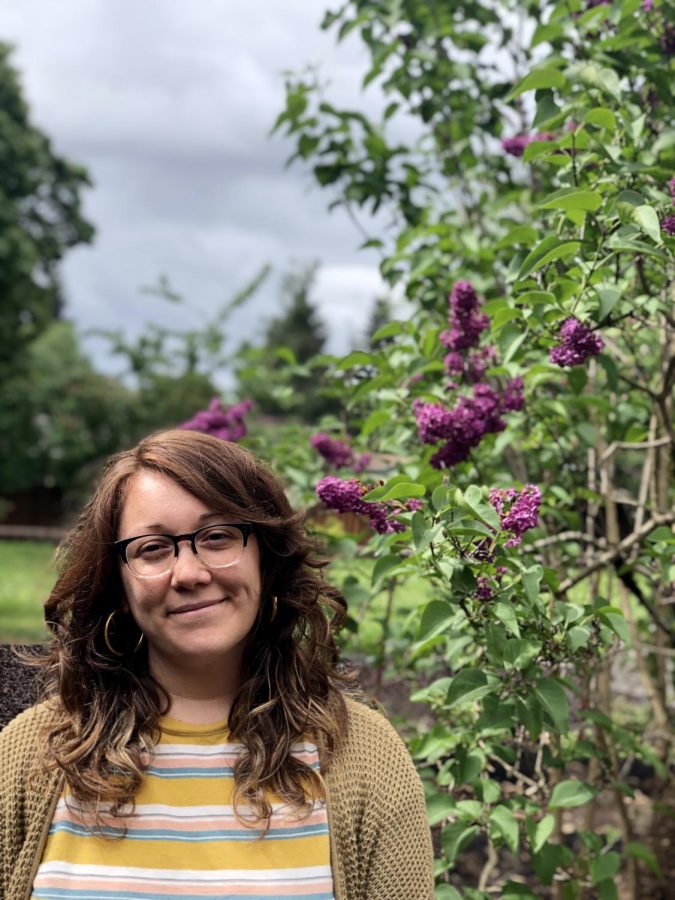COVID-19 causes challenges for Special Education staff and students
Cate Lopez, Lincoln’s Speech and Language Pathologist, believes Special Education (SpED) students are doing well adapting to online learning. But challenges remain.
The Special Education (SpED) program at Lincoln is already at a disadvantage with a smaller teaching staff compared to other PPS schools. Now, during the quarantine, students may be falling even further behind.
Currently, Lincoln students attend two one-hour classes from Monday through Thursday on Google Meet. After classes, students have the option to check-in with their teachers. The limited amount of face-to-face time with teachers is making it difficult for students with disabilities to feel like they are being given the support and attention they need.
“We are in the SpED program because we need a certain level of support and we learn in different ways. [Online,] we don’t have that. Just being on a laptop is not really the most supportive way,” says senior Samantha Howard, who has been in Lincoln’s SpED program since her freshman year. “For me, personally, I learn better when I’m there and I can talk to [teachers] face-to-face and we can’t really do that via Google Meet. It all goes back to the lack of support. We can’t really talk to a teacher at FLEX or after school in a way that we could before, and it causes a lot more anxiety around school when it’s already a very anxious time.”
Teachers have also noticed certain students struggling due to the online schedule.
“Students with learning challenges have a lot to deal with, and distance learning just adds to those challenges in most cases. Help with assignments has delayed answers [and] you can’t just go check in when you need help with work,” says SpED teacher Linda Edington, who has been working in the SpED field since 2002.
For Howard, a typical SpED class during the regular school year consisted of constant discussions with her teacher about her grades and the help she needed for upcoming tests. Her SpED teacher would also help her make study plans.
“It was just one class where you could get the help you needed,” says Howard.
Now, with only two classes every day, Howard is only guaranteed one meeting with her SpED teacher each week. This has made communication and getting proper support difficult.
“Your SpED teachers are [supposed to be] there to talk to you and make sure you’re doing okay, but it’s really hard to talk to them online,” says Howard. “My SpED teacher kind of became like my therapist. I would just vent to them. Now, I can’t do that, and that’s kind of hard to deal with.”
At the same time, the online schedule has been difficult for SpED teachers themselves.
“There’s such a big learning curve for me. There’s so much new technology I’ve had to learn,” says Alicia Denney, who has been working with students with disabilities for 15 years. “Also, I’m a part-time teacher, so normally I work 20 hours a week. Now, I’m easily putting in 40 hours a week at home trying to learn everything new so that I can help my students.”
Another difficulty that teachers have faced is making sure that their students stay on task and complete their assigned work after the short class period ends.
“When I log off from a meeting with my students, I don’t know what they do afterwards,” says Denney. “In the classroom after we meet, I can come around and do a second or third check to answer any questions that they have and make sure that they’re getting their work done. That’s a little bit more difficult online. It’s not impossible, but it’s just more difficult.”
Despite these difficulties, teachers are finding the silver lining within the pandemic.
“This whole experience has forced so many of us to slow down, but in other ways, it has caused us to speed up, like in the case of practically overnight switching over to a distance learning plan and all of the scrambling that has involved. Everyone is doing such an impressive job of adapting, and this experience is providing teachers with a whole new skill set,” says Cate Lopez, Lincoln’s Speech and Language Pathologist.
Howard, who struggles with test anxiety, has found the minimal number of presentations and tests to be comforting, especially in a time when many are stressed and preoccupied with other things.
Through this pandemic, individuals have also learned how to better work together.
“My co-workers and admin [staff members] have been really great when I have reached out to them to problem solve and keep moving forward,” says Lopez.
But the upsides of the pandemic cannot outshine the difficulties that students with disabilities have faced during this time, students say. Although there is no one solution to the problem, Howard believes that more support would be available if Lincoln had stuck to an A and B schedule with four classes everyday.
“I think more check-ins [would be helpful], so we need to have more constant [classes and face-to-face time with teachers]. If we kept things normal, I feel like that would help every student. We needed a sense of normalcy and the fact that we only have two classes a day, it’s just not what we need to feel like everything’s gonna be okay,” says Howard.
Due to the lack of needed support students with disabilities have, online school has been extremely taxing. As the pandemic continues, members of the special education community believe the difficulties that these students face, both in school and out, will only grow.
“[As students in the SpED program,] we’ve worked for years to try and take initiative for what we need and want and become our own self-advocates,” says Howard. “Just suddenly having to do that on our own is very difficult.”


